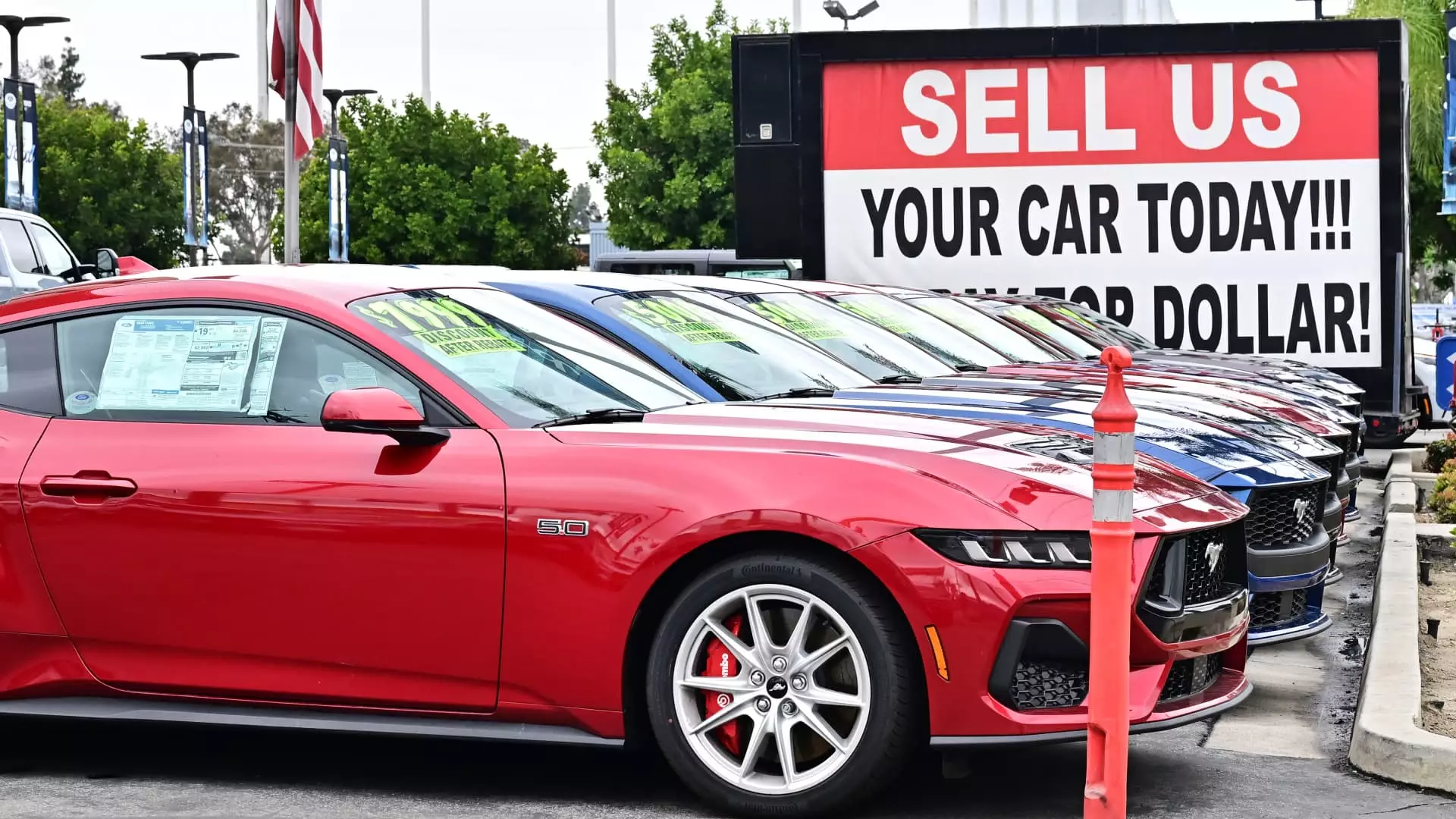The used vehicle market experienced a notable shift in pricing dynamics last month, showcasing a drop from the surging highs seen in April. As consumers, initially anxious about the impact of tariffs on new car prices, rushed to secure used cars, they inadvertently contributed to a subsequent easing of prices—a situation that many economists, from automotive to consumer goods sectors, are monitoring closely. According to the latest report from Cox Automotive, the Manheim Used Vehicle Value Index dropped by 1.5% from April to May, though it still sits 4% above the same time last year. This fluctuating market, characterized by rapid price increases followed by declines, raises a crucial question: if prices are stabilizing, are they genuinely falling, or is this simply a mirage?
Tariffs: An Indirect Influence
While the increasing tariffs on new vehicles—set at a staggering 25%—have not directly affected the used vehicle sales market, they have nevertheless cast a long shadow. These tariffs, driven by political agendas, recalibrate consumer expectations and ultimately how the automotive market functions. The demand for used cars remains robust, reflecting an industry grappling with inventory shortages. With only 2.2 million used vehicles available, the frustrating reality is that supply chain issues continue to plague the industry, forcing consumers to hold onto their old cars for extended periods.
The political implications of such tariffs should not be underestimated. They create a ripple effect: as new cars become less affordable, the demand for pre-owned vehicles intensifies. This situation is a classic example of how policy decisions can alter the landscape of consumer behavior in a significant way. The resilience of the used vehicle market amidst these changes can be seen as a reflection of broader economic trends: consumers reluctant to spend their hard-earned dollars on new vehicles will shift their focus, creating temporary surges in the used market as they play catch-up.
Market Trends: The Calm After the Storm?
The latest figures show that while retail sales of used vehicles slipped by 3% from April to May, they did deliver a 4% year-over-year increase. This duality points to a market that is in transition—demand is undoubtedly there, but the limitations on supply due to stagnant production rates can lead to price hesitance among buyers. The balancing act between supply and demand requires careful navigation; prices priced too high could as easily stall sales altogether, pushing consumers away from the market entirely.
Jeremy Robb, the senior director of economic and industry insights at Cox Automotive, highlights the paradox inherent in current pricing trends. While wholesale prices soared in April, the aftermath saw a retreat, albeit one that still stands significantly higher than previous years. As consumers cling to the safety of used vehicles, the ongoing shifts suggest a marketplace grappling with uncertainty and unpredictability—a dangerous game for both consumers and dealers.
Looking Ahead: Is Stability Achievable?
It is essential to confront the larger systemic issues at play in the automotive industry. The stability that many hope to see in the used vehicle market is not merely a function of consumer behavior, but also of underlying production capabilities and broader economic conditions. Without concerted efforts to address the root causes of supply chain disruptions, any sense of calm in the automotive markets might prove temporary at best. As the industry looks forward—beyond individual price remarks—it remains to be seen whether effective solutions can be enacted to foster a genuinely sustainable automotive environment for both used and new vehicles alike.


Leave a Reply